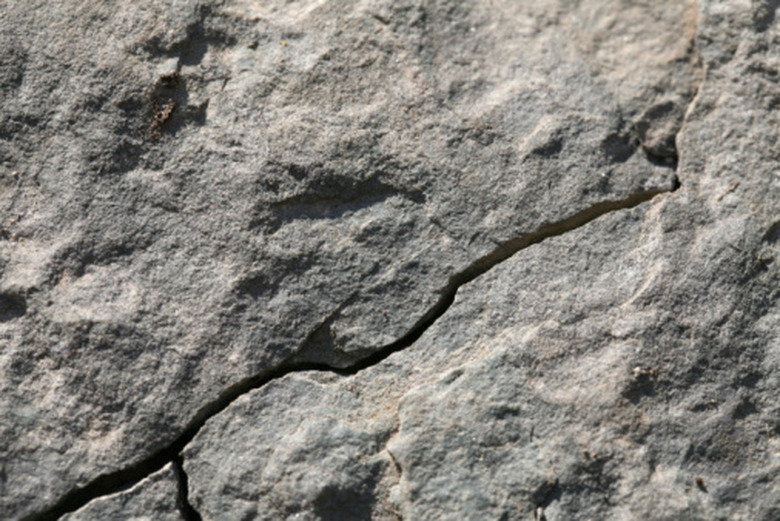The Effects Of Physical Weathering
Physical weathering is the decomposition of mineral and rock material by either internal or external mechanical means. Frequently, the physical weathering exposes rocks and minerals to other forces, such as chemical weathering processes like oxidation and dissolution. The effects of physical weathering may differ in detail and process slightly, but they all lead to the eventual disintegration of the material on which they act.
Cracking and Fissuring
Cracking and Fissuring
The most common effect of physical weathering is the formation of cracks, fissures and joints. Joints are uniform, patterned fractures that exhibit no deviation across the fissure. When cracks and fissures occur in the surface of a rock, the weathering and erosion process speeds up due to the previously protected inner structure of the rock now being exposed to the elements. This causes the rock to further crack and degrade over time.
Another effect of the cracking of physically weathered rock is the introduction of plant and small animal life into the fissures of the rock. Plant roots and animal activity within physically weathered rock crevices can further undermine the structural integrity of an already weakening rock.
Crystal Growth
Crystal Growth
Water that filters through cracks and pore spaces in physically weathered rock sometimes contains ions, which are atoms or molecules with a positive or negative electrical charge. These ions can cause crystals to form inside of the cracks and fissures of physically weathered rock. As the crystals expand, they can force the cracks in which they're growing to become larger, further breaking apart the weathered rock.
Frost Wedging
Frost Wedging
As with crystal formation, frost wedging exerts a destructive force on the structural integrity of a rock through outward expansion. When water enters cracks and fissures caused by physical weathering, and then freezes, the volume of the water increases. The increase in volume causes the freezing water to further split open existing cracks and fissures in the rock. Frost wedging is particularly common in the numerous freeze-and-thaw cycles of higher altitudes.
Cite This Article
MLA
Ramirez, Juan. "The Effects Of Physical Weathering" sciencing.com, https://www.sciencing.com/effects-physical-weathering-7413510/. 24 April 2017.
APA
Ramirez, Juan. (2017, April 24). The Effects Of Physical Weathering. sciencing.com. Retrieved from https://www.sciencing.com/effects-physical-weathering-7413510/
Chicago
Ramirez, Juan. The Effects Of Physical Weathering last modified March 24, 2022. https://www.sciencing.com/effects-physical-weathering-7413510/
